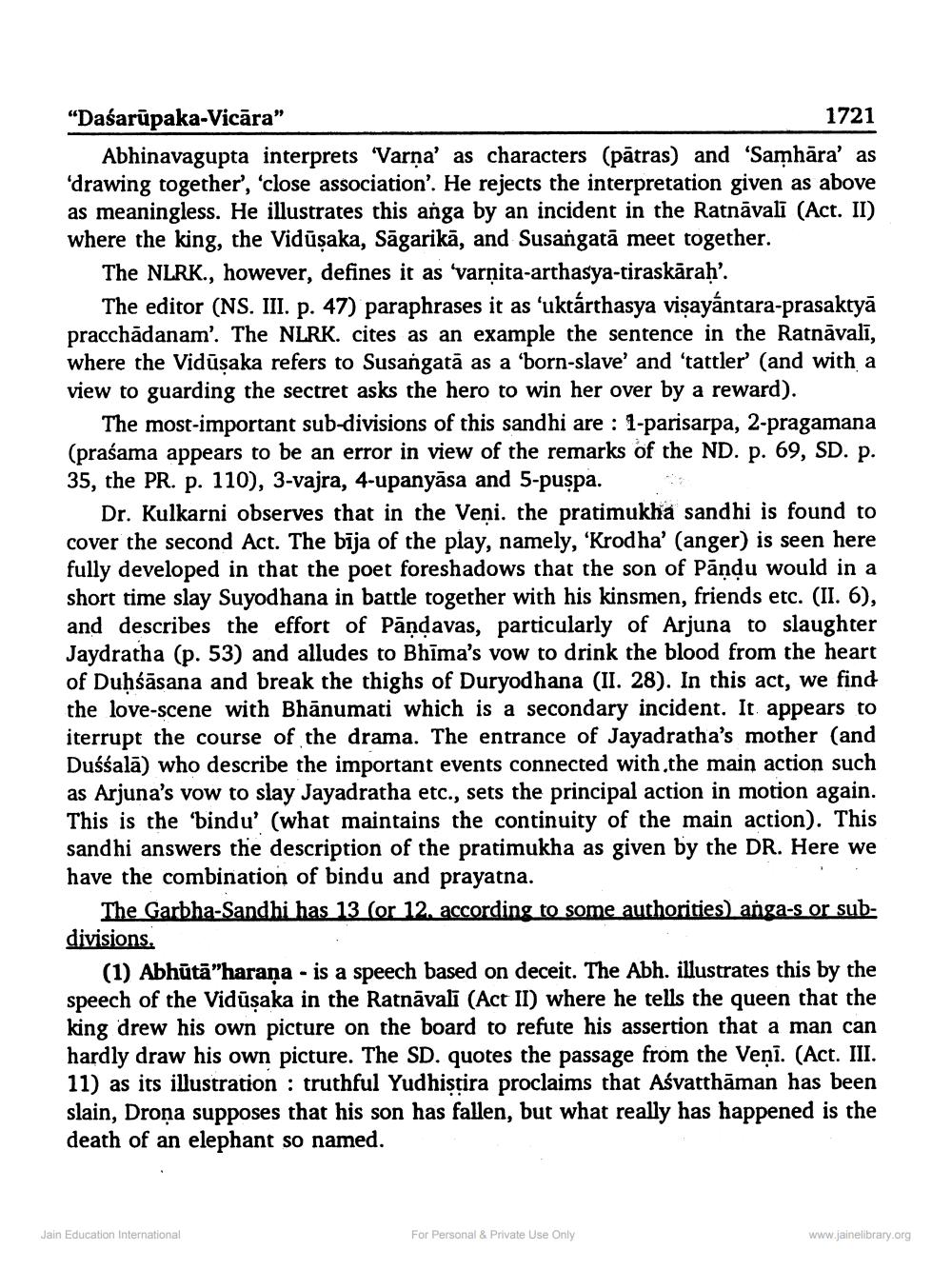________________
"Dasarūpaka-Vicāra"
1721 Abhinavagupta interprets "Varna' as characters (pātras) and 'Samhāra' as 'drawing together', 'close association'. He rejects the interpretation given as above as meaningless. He illustrates this anga by an incident in the Ratnāvalī (Act. II) where the king, the Vidūşaka, Sāgarikā, and Susangatā meet together.
The NLRK., however, defines it as 'varņita-arthasya-tiraskāraḥ'.
The editor (NS. III. p. 47) paraphrases it as 'ukrárthasya visayantara-prasaktyā pracchādanam'. The NLRK. cites as an example the sentence in the Ratnāvalī, where the Vidūsaka refers to Susangatā as a 'born-slave' and 'tattler' (and with a view to guarding the sectret asks the hero to win her over by a reward).
The most-important sub-divisions of this sandhi are : 1-parisarpa, 2-pragamana (praśama appears to be an error in view of the remarks of the ND. p. 69, SD. p. 35, the PR. p. 110), 3-vajra, 4-upanyāsa and 5-puşpa.
Dr. Kulkarni observes that in the Veni. the pratimukha sandhi is found to cover the second Act. The bīja of the play, namely, 'Krodha' (anger) is seen here fully developed in that the poet foreshadows that the son of Pāndu would in a short time slay Suyodhana in battle together with his kinsmen, friends etc. (II. 6), and describes the effort of Pandavas, particularly of Arjuna to slaughter Jaydratha (p. 53) and alludes to Bhīma's vow to drink the blood from the heart of Duhśāsana and break the thighs of Duryodhana (II. 28). In this act, we find the love-scene with Bhānumati which is a secondary incident. It appears to iterrupt the course of the drama. The entrance of Jayadratha's mother (and Duśśalā) who describe the important events connected with the main action such as Arjuna's vow to slay Jayadratha etc., sets the principal action in motion again. This is the 'bindu' (what maintains the continuity of the main action). This sandhi answers the description of the pratimukha as given by the DR. Here we have the combination of bindu and prayatna.
The Garbha-Sandhi has 13 (or 12. according to some authorities) anga-s or subdivisions.
(1) Abhūtā"harana - is a speech based on deceit. The Abh. illustrates this by the speech of the Vidūsaka in the Ratnāvali (Act II) where he tells the queen that the king drew his own picture on the board to refute his assertion that a man can hardly draw his own picture. The SD. quotes the passage from the Veni. (Act. III. 11) as its illustration : truthful Yudhistira proclaims that Aśvatthāman has been slain, Drona supposes that his son has fallen, but what really has happened is the death of an elephant so named.
Jain Education International
For Personal & Private Use Only
www.jainelibrary.org




